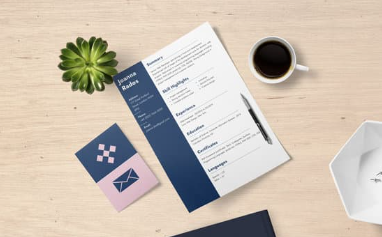
Crafting a Standout STEM Resume: How to Get Noticed in a Competitive Job Market
In the dynamic and competitive world of STEM, your resume is often your first chance to make a meaningful impression. Whether you're applying for a role in engineering, data analytics, biotechnology, software development, or environmental science, a clear and compelling resume is key to advancing your career. Here's how to create one that stands out — and gets you noticed.
Start with a Sharp Summary
Open with a concise, tailored professional summary that communicates your experience, skills, and career goals in 2–3 sentences.
Example:
“Analytical Data Scientist with 4+ years of experience in machine learning and statistical modeling, passionate about leveraging data to drive real-world solutions in healthcare technology.”
Highlight Relevant Experience
STEM roles are results-driven — so quantify your achievements. Tailor each resume to the role by aligning your accomplishments with the job description and using discipline-specific terminology.
Example:
Mechanical Engineer, InnovateTech Ltd., 2020–2023
- Led the mechanical design of automated manufacturing systems, improving assembly efficiency by 25%.
- Collaborated with cross-functional teams to prototype medtech devices meeting ISO 13485 standards.
Showcase Your Education and Certifications
List degrees in reverse chronological order, including any thesis topics or coursework relevant to the role. Highlight technical certifications like PMP, Six Sigma, AWS, or industry-specific ones (e.g., CE marking for medtech, Python certification for data science).
Emphasize Technical Proficiency
Include a dedicated Technical Skills section. Whether it's MATLAB, AutoCAD, Python, R, SQL, SolidWorks, or bioinformatics tools — tailor this to what the job requires.
Demonstrate Soft Skills That Matter
STEM roles increasingly demand more than technical ability. Showcase leadership, communication, and creative problem-solving skills — especially from projects, team collaborations, or cross-functional roles.
Tailor for ATS & Job Relevance
Use the job description as your guide. Mirror the language and keywords employers use — such as “data pipelines,” “compliance engineering,” or “project lifecycle” — to pass Applicant Tracking Systems (ATS) and catch the hiring manager’s eye.
Include Professional Development and Projects
Show your passion for growth by listing:
- Courses (Coursera, Udemy, university-led workshops)
- Hackathons, case competitions, or innovation challenges
- Professional organizations (e.g., Engineers Ireland, Data Science Ireland)
- Publications, patents, GitHub portfolios, or personal STEM blogs
Keep It Clean and Impactful
Stick to a professional, easy-to-read format:
- Use bullet points for clarity
- Keep it under two pages
- Choose a modern, professional font (like Calibri, Helvetica, or Arial)
- Make sure spacing and margins are consistent
Proofread and Review
A single typo in a technical document can raise concerns. Review thoroughly and, if possible, get a mentor or colleague in your field to provide feedback.
Conclusion
A successful STEM resume blends technical expertise, real-world problem-solving, and a commitment to learning and innovation. Tailor your resume to every job, highlight both hard and soft skills, and demonstrate how you solve problems that matter.
Explore job opportunities and resources tailored to your industry at SuperHire.ie — and take the next step in your STEM career journey today.
